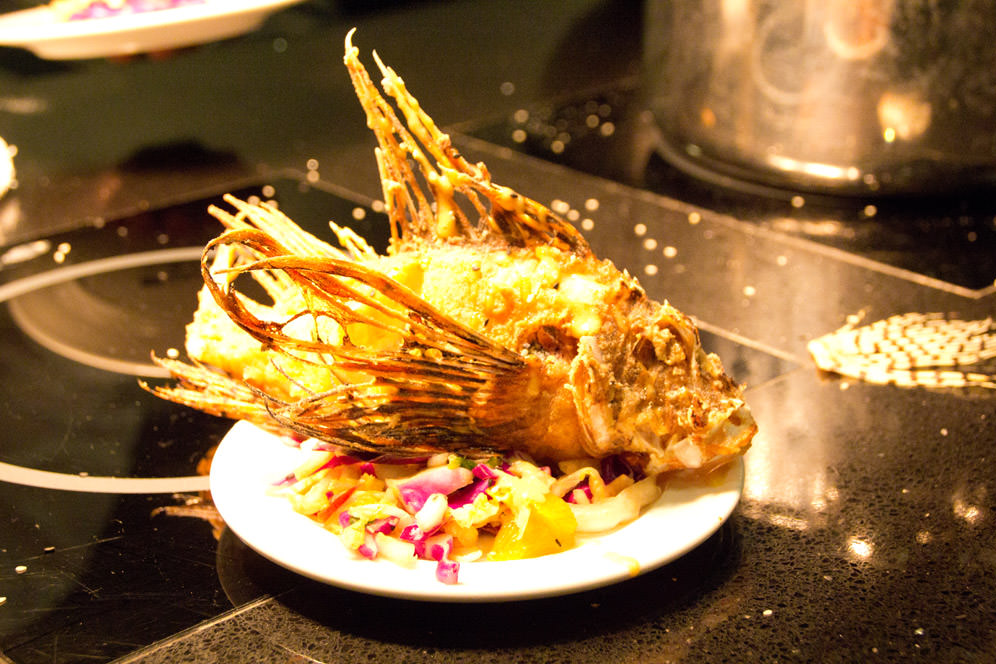It's Payback Time
ONMS releases plan to curtail invasive lionfish
By Saiontoni Sarkar
The lionfish invasion sweeping the waters of the southeastern United States, Caribbean Sea and Gulf of Mexico is well-documented. We know what we're up against: hordes of venomous, fast-growing intruders with voracious appetites and no natural predators. So, what can be done to stop the spread of these underwater marauders?
The national marine sanctuaries have a plan.

Since their appearance in this part of the world in the late 1990s, Indo-Pacific red lionfish have invaded Florida Keys, Flower Garden Banks, Gray's Reef and Monitor national marine sanctuaries, where they pose threats to both people and marine life. Their venomous spines can be painful to swimmers, divers and fishermen, and they wreak havoc on reef ecosystems by eating more than 50 species of fish and invertebrates, including commercially important species like snapper and grouper.
Now, after years of studying this unprecedented marine invasion, NOAA's Office of National Marine Sanctuaries has released its Lionfish Response Plan, which outlines the sanctuaries' plan of attack to curb the lionfish threat as well as raise awareness about this invasive species. The report identifies priority actions necessary to reduce the impact of the invasion and recommends science, service and stewardship activities along with collaborations among NOAA and external partners.
"The goal of the Lionfish Response Plan is to organize our efforts in the areas of monitoring, control, research and education and outreach at national, regional and local scales," said Steve Gittings, ONMS Science Coordinator.
For example, Florida Keys National Marine Sanctuary and the Reef Environmental Education Foundation have hosted lionfish derbies where dive teams compete to remove lionfish. In February, ONMS co-sponsored a Celebrity Chef Lionfish Challenge with the National Marine Sanctuary Foundation and SeaWeb during the SeaWeb Seafood Summit in New Orleans. The event showcased lionfish as a sustainable seafood choice, demonstrating the potential for cooking and eating lionfish to help manage the invasion.
Photos from the Celebrity Chef Lionfish Challenge. Credit: Devin Harvey
Gittings said given the widespread nature of the lionfish invasion, coordinating current and future actions to address the issue is particularly important.
"We have to do everything we can to minimize ecosystem degradation in affected sanctuaries so that sanctuaries continue to serve as refuges for native reef species," Gittings said. "And lessons learned from the lionfish invasion will make managers better capable of dealing with future invasions by other species, should they occur."




